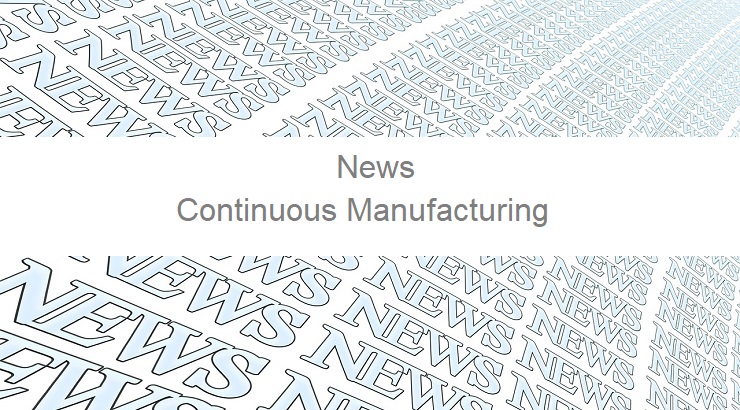Compared to traditional batch processing of pharmaceuticals, continuous production offers greater efficiency, robustness, and quality control. Continuous pharmaceutical manufacturing begins with ingredients and ends with the final product, without stopping during production. As a result, there is no need to shut down equipment, reducing costs and improving quality control.
Increasingly recognized as a superior method to manufacture pharmaceuticals in large volumes, especially when it comes to tablets and pills, continuous processing allows for greater quality assurance of large quantities of product at once, as opposed to one batch at a time.
While the regulatory environment tends to curb change in the pharmaceutical industry, regulatory authorities, the FDA in particular, have recognized that continuous processing has the potential to improve product quality and are encouraging the industry to step up to the plate.For continuous bioprocessing, the main driver is process intensification. With biopharmaceuticals, continuous cell culture processes have been used for monoclonal antibody production and other biopharmaceuticals early on. However, continuous downstream processing has garnered much attention in the past ten years.
Keith Fritsky of W. L. Gore & Associates discusses uptake among biomanufacturers and W. L. Gore’s perspective on operation of equipment in continuous bioprocessing. –KB
Contract Pharma: What Gore is seeing with respect to uptake of continuous processing?
Keith Fritsky: Continuous processing remains a hot topic. Although it’s difficult for biomanufacturers to say when continuous processing will be a normal part of their operations, several prominent biopharma companies have process development work in this area. We have heard questions and concerns whether consumable components like peristaltic pump tubing would last the desired number of days in operation without the need for process intervention. The BPOG Biomanufacturing Technology Roadmap – Continuous Downstream Processing (An Industry Review), identified the need for continuous-use-grade tubing to withstand pumping for up to 90 days in use.
CP: Are there any challenges related to the operation of equipment in continuous processing, particularly in areas that Gore participates?
KF: The problem as we’ve heard it, appears to be a concern over limited robustness of pump tubing used in fluid transfer over prolonged duration and/or at elevated pressure. Additionally, limited robustness may increase risk of a closed system breach due to the need for process intervention, for example to change tubing in the pump head to avoid wear-out. Also an issue is mechanical deterioration in the pump that may lead to flow decay, rupture, and/or spallation (particle shedding of tubing material).
CP: While continuous processing has been discussed for decades, it’s still taking a while to make its way through the industry. Are you seeing any obstacles to accepting new solutions in the area of continuous bioprocessing?
KF: Several challenges have hindered adoption of continuous processing, including but not limited to uncertainty regarding material robustness over prolonged periods, the need for greater accuracy and robustness of sensors, and integration of equipment with systems to enable automation. Continuous processes can last from a few days to weeks, underscoring the need to address the efficiency and complexity of downstream purification steps and strategies for bioburden control.
CP: With respect to advanced materials, are there other areas of the biopharma process that Gore has targeted for developing continuous processing solutions?
KF: One area we are excited about, and where we have some encouraging data, is with continuous chromatography. Today we offer membrane-based affinity chromatography columns up to 9 mL in size that utilize a unique ePTFE membrane composite. This membrane technology combines both high flow rates and high binding capacity while maintaining performance when cycling, at up to 12 times faster residence times than resin. Although we’ve only evaluated continuous chromatography with the smaller sizes to date (3.5 mL size), we are encouraged that this technology could improve downstream process time, demonstrating 10 times the productivity of resin when used in conjunction with multicolumn chromatographic processes.
CP: What is Gore’s view on the need for more robust materials/components in continuous processing operations?
KF: Advancements in materials science and engineering can enable innovative component solutions that reduce risk through greater process security. An example is GORE® STA-PURE® Pump Tubing, Series PCS which can protect against tubing failures even after 90 days continuous operation, thus allowing biomanufacturers to run longer with confidence.
Keith Fritsky has over 15 years of product management experience with W. L. Gore & Associates, working in the pharmaceutical and medical device industry. During this time, Keith managed various venting and filtration products used in non-implantable medical devices. For the last 8 years, Keith has been the Product Specialist for GORE STA-PURE Pump Tubing with global responsibility for sales, marketing, technical, and supply chain initiatives. Keith holds a BS and MS in Mechanical Engineering from Drexel University.

